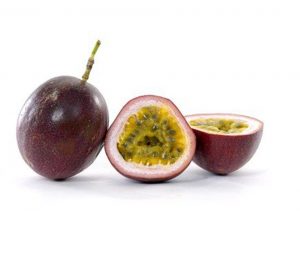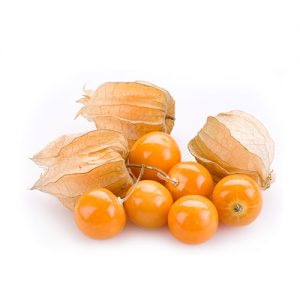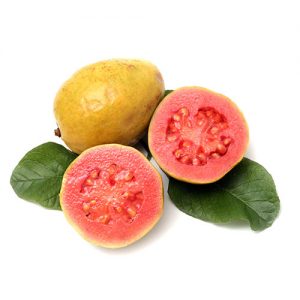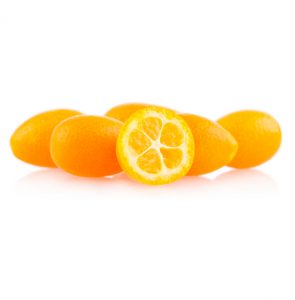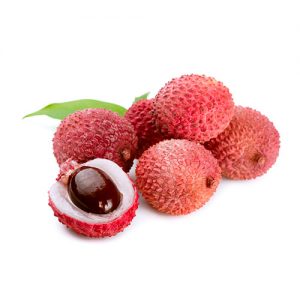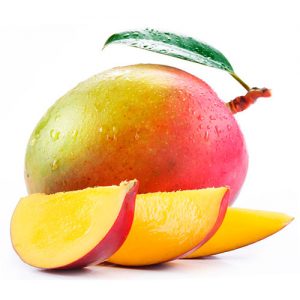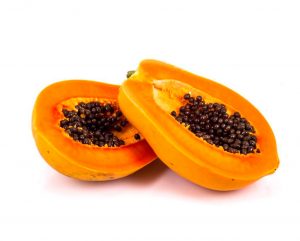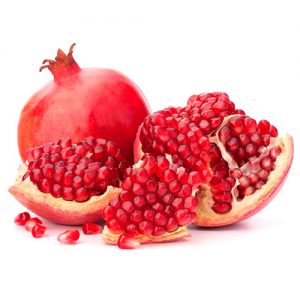About the Mango
Mangoes are native to the North-West region of India and North of Burma. They were cultivated for the first time around five thousand years ago. Fortunately, the cultivation of mangoes spread to all tropical and subtropical regions of the world, being Mexico the main exporting country at present.
Mangoes are regarded as the king of the tropical fruit because of their exquisite and peculiar flavour. A mango tree can grow up to 100 ft (30 m), and it features a straight, cylinder-like trunk of grey bark and 2-3 ft (75-100 cm) of diameter. The fruit is oval, elongated and kidney or heart-shaped. When ripe, the skin turns into colours ranging from green, yellow or orange to even intense red. The flesh is yellow/orange-coloured, sweet, juicy and deliciously tasty. The flavour and texture are actually very different from the rest of the fruit, for what is considered the ultimate tropical fruit!
How to preserve and consume mangoes
Once collected from the mango tree with the adequate sugar content, this fruit will be ripe and ready to consume in a time period between five and ten days. Until then, mangoes will need to be at a temperature of around 20º-25ºC. Once the fruit is ripe, it should be consumed in the next 5 days at most. Mangoes are only meant to be refrigerated if you intend to serve them cold. In such case, refrigerate only during the interval they need to reach the desired temperature.
To eat immediately, it is important to verify it presents a slightly soft flesh (it yields to gentle pressure) and that it also gives off a nice scent. Mangoes are at their best taste when ripe. The colour of the skin is not an indication of how ripe a mango is. This colour only tells us the variety of the fruit.
But the colour of the flesh is indeed an indication of ripening: an orange-coloured flesh reveals a perfectly ripe mango ready to be consumed. The flesh firmness decreases as the mango ripens.
Nutritional properties of the mango
| MANGO NUTRITION FACTS – 100 G | |
|---|---|
| CALORIES | 65 |
| TOTAL FAT | 0.27 g – 0% |
| SATURATED FAT | 0.066 g – 0% |
| POLYUNSATURATED FAT | 0.051 g |
| MONOUNSATURATED DAT | 0.101 g |
| CHOLESTEROL | 0 mg – 0% |
| SODIUM | 2 mg – 0% |
| POTASSIUM | 156 mg |
| TOTAL CARBOHYDRATE | 17 g – 6% |
| DIETARY FIBER | 1.8 g – 7% |
| SUGARS | 14.8 g |
| PROTEIN | 0.51 g |
| VITAMIN A | 15% |
| VITAMIN C | 46% |
| CALCIUM | 1% |
| IRON | 1% |
Percent Daily Values are based on a 2000 calorie diet. Your daily values may be higher or lower depending on your calorie needs.
Health benefits of the mango
Mangoes are a sweet and refreshing fruit easy to consume and digest. Its nutritional properties vary depending on the type and the ripening stage. However, all types of mango are characterized to have high water content and a wealth of nutrients.
They are rich in vitamin B and folic acid. Non-ripe mangoes are mainly consumed in salads and contain vitamin C and a moderate quantity of provitamin A. On the contrary, ripe mangoes are rich in provitamin A and contain a moderate quantity of vitamin C.
The absorption of vitamin A helps prevent infectious diseases; skin disorders; mucosa disorders; bone/hair/eye conditions, and even immune system related-diseases.
The high content in vitamin C helps absorb iron and produce red cells, as well as produce collagen, teeth and bones. These vitamins make mangoes a good anti-oxidant consisting of nutritional properties for people of all ages. Mangoes also contribute to reduce the risk of cardiovascular diseases, degenerative disorders and even cancer.
The high content in iron is effective in treatments for anemia and other blood conditions.
People on loss weight diets or with high blood pressure can consume mangoes because they are low in fat, sodium and calories.
The high fibre content provides laxative properties, and it prevents constipation, reduces cholesterol levels in blood and helps control blood sugar appropriately.
Mango Varieties
- Mango Keitt, oval-shaped and slightly flattened, with an intense, dark pink colour with green shades. It tastes sweet and fruity, with an acidic kick. Compared to its other mango counterparts, it presents a low content in sugar.
- Mango Kent, oval-shaped and wide. It excels by its intense sweetness and a flavour resembling that of peaches. The flesh is juicy and low in fibre. The approximate weight is 16-21 oz (450-600 g). The skin is thick.
- Mango Osteen, ovoid/oblong-shaped and elongated. It can be identified by its red/purple colour with yellow, red or green streaks. It has an approximate weight of 17.5 oz (500 g). The skin is thick and resistant and the fruit features a small seed inside. The Mango Osteen tree grows straight and it is medium-sized. The fruit tastes particularly sweet with an acidic kick.
- Mango Tommy Atkins, ovoid/oblong-shaped and orange or intense red-coloured. The flesh has high fibre content.
More types of mangoes: Mango Ataúlfo, Francis, Haden, Irwin, Ngowe, Apple, Smith, Mora, Parkins, Red Haden, Gouverneur, Manga rosa, Zill, Parvin, Sheil, Safeda, Pairi, Mabruka, Alphonso, Sindri, Langra, Julie, etc.
Curious facts about mangoes
- In India, mangoes symbolize love. A box of mangoes is regarded as a token of friendship.
- It is a medicinal fruit: it tones the heart up; expels toxins; strengthens the tissues, and prevents premature aging. Apart from that, it is good for the liver and eases digestion.
- Green mangoes are used to prepare an extremely popular Indian beverage, the ‘Aam Ka Panna’, which helps beat the heat, quench the thirst and fight against anemia.
- Thanks to their high content in calcium and vitamin C, mangoes can be consumed to have (and show off!) healthy and strong teeth.
- Mangoes and carrots are eyesight’s best friends. Smoothies made of mango are good to heal dried or itchy eyes, thanks to their high content in vitamin A.
- This fruit’s content allows for the preparation of natural syrups that are a superb remedy for coughing.
- If you are going to spend the day at the beach or practicing sports, mangoes will help you replace fluids and minerals.
- This fruit contains glutamic acid, which is responsible for stimulating your memory and maintaining the cell activity.
- The beta-carotene content in mangoes is anti-cancerous, helping prevent cardiovascular diseases and fight asthma as well as other diseases, like Parkinson’s, Alzheimer’s or arthritis.




